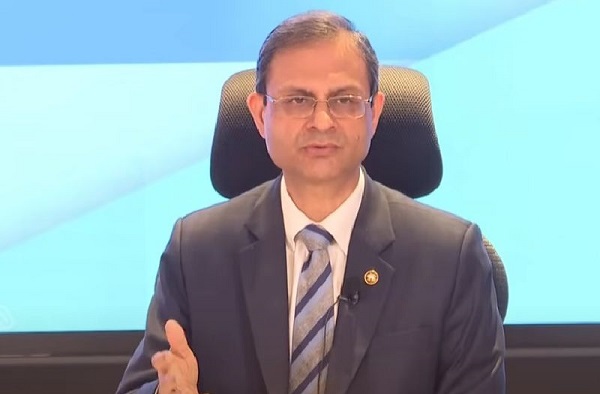.png)

Kirti Tarang Pande is a psychologist, researcher, and brand strategist specialising in the intersection of mental health, societal resilience, and organisational behaviour.
October 25, 2025 at 5:18 AM IST
How many Cadbury Celebration boxes did you receive this Diwali?
Two decades ago, this question would have been absurd. Chocolate wasn’t part of Indian festivity—it was “their food,” not “ours.” Through the 1980s and 1990s, Indian celebrations belonged to laddoos and barfis, not milk chocolate. But then came Cadbury Dairy Milk, with an unforgettable campaign that didn’t just introduce a new product. It introduced a new emotion, a Western confection reimagined as something deeply Indian, joyful, and shared.
Do you remember that ad? A cricket match, a young man at the crease, and a girl in the stands who breaks into a carefree dance as he hits a six? It wasn’t about chocolate at all. It was about freedom. It was about the asli swaad zindagi ka. That girl, twirling barefoot on the field, became an icon of spontaneous joy at a time when Indian womanhood was still bound by social restraint.
This carefree girl struck a chord with Indian women. They were her at heart—a quiet maverick like the ‘Angry Young Man’ was to men. It gave a dream to the Indian woman. A dream of freedom, of spontaneous self-expression, of loving and living without apprehension. For the first time, a global product spoke India’s emotional language through cricket, music, and Hindi storytelling.
This was the genius of Piyush Pandey’s storytelling. Imagine that pitch room in the 1990s—an Indian copywriter convincing British clients that the way to sell chocolate in India was through cricket, a dancing girl, and a Hindi jingle that didn’t even mention the product’s taste. “Kuch khaas hai zindagi mein,” he must have said. It was bold. Not just for the conservative Indian market but also for the British clients. It sounded emotional, not rational. But it worked—because it wasn’t selling chocolate. It was selling identity.
Cadbury turned “their food” into “our celebration.” It gave India a way to express joy and modernity without guilt. It let the new middle class buy not sweetness, but self-expression. Two decades later, “Kuch Meetha Ho Jaye” isn’t just a line, it’s part of our cultural vocabulary. That is the true mark of brand transcendence: when your tagline becomes a ritual.
So what was the real psychology behind Cadbury’s success, and how can today’s leaders replicate it?
Let’s call it The Aspirational Identity Ladder—a three-step framework that every CEO, investor, and policymaker can use to build brands, portfolios, and policies that emotionally endure.
The ladder starts with an unspoken aspiration—an emotional gap your audience can’t yet articulate. For 1990s India, it was freedom and self-expression, especially among women. The next step is the emotional bridge—the ritual that lets them live that dream safely. For Cadbury, it was cricket and Hindi music. At the top lies the cultural badge—when your product stops being an object and becomes identity. Cadbury didn’t just sell a treat; it sold a cultural passport.
Identity Shift
Now look at Hyundai Motor’s Vision 2030 through this same lens. They aren’t just selling cars; they’re selling a psychological upgrade. For India’s new achievers, success today is not just wealth, it’s recognised arrival. The modern Indian wants to be seen as globally fluent but rooted, successful but responsible.
Hyundai’s luxury arm, Genesis, is built precisely around this identity gap. It offers the aesthetic prestige of a Mercedes, but with the humility of “Made in India” pride. It promises status without arrogance, luxury without guilt. That’s the emotional bridge. The badge is what owning it says: I have arrived—gracefully, intelligently, responsibly. Even before Genesis takes full flight, Hyundai has “premiumised” its mainstream range—Creta, Verna, Tucson—democratising sophistication through design, technology, and comfort.
This is how aspiration works in the new economy: you don’t climb it through price, you climb it through purpose. Hyundai’s growing investment in electric and hybrid mobility aligns with another deep aspiration in urban India—the desire for moral sophistication. In an era where “eco” equals elite, sustainability itself has become a luxury badge. A green car isn’t just a vehicle—it’s a virtue signal. A lifestyle declaration: “I’ve evolved.”
But here lies the danger—and the opportunity. Across industries, from fashion to automobiles to finance, we are seeing the rise of Emotional Inflation. Prices have gone up, but emotional yield has collapsed. Luxury has become more expensive but less meaningful.
Bain & Company calls it a structural slowdown. Psychology calls it an emotional correction. Consumers aren’t rejecting luxury—they are rejecting its indifference. When everything looks perfect, nothing feels personal. Scarcity no longer signals exclusivity; it signals exhaustion. The heart has gone missing from the high-end.
This is the challenge the luxury market is facing. They have inflated price faster than purpose, and they are already losing emotional market share. A sterile product may still command margin, but it will never command loyalty. You must build intimacy, not intimidation. People no longer pay for perfection. They pay for connection.
Therefore, this old Cadbury ad provides a new lens for long-term value. Ask: is the company selling a features list, or is it closing an aspirational identity gap? The former is a commodity; the latter is a psychological monopoly. Emotional differentiation compounds more reliably than product differentiation.
The deeper truth is this: every market runs on meaning before it runs on money. Emotional inflation isn’t an aesthetic problem—it’s a strategic one. It marks the moment when your brand stops evolving with your audience’s self-image. When that happens, even growth feels empty.
The answer is not more advertising, it’s more anthropology. Go back to your people. Study the emotions your consumers are quietly rehearsing but not yet expressing. Map their unspoken dreams. Build your product narrative as the bridge to that identity. Make them feel who they wish to become, and they will carry your brand as the proof.
Because in the end, Cadbury didn’t sell chocolate. It sold the right to feel joy, without permission. Hyundai isn’t selling cars. It’s selling a certificate of emotional arrival. The question for every leader reading this—whether you run a company, a fund, or a country—is no longer “What does my product do?”
The only question that matters is: Who does my customer desperately want to become—and how does my brand become the bridge to that identity?
Stop selling the ingredient. Start selling the transformation. That’s how you future-proof your brand in a world drowning in Emotional Inflation. Because when meaning goes missing, even luxury feels cheap.



